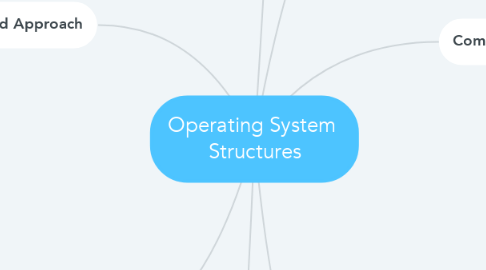
1. System Calls
1.1. interface between a running program and the operating system.
1.2. Types
1.2.1. Process control
1.2.2. File management
1.2.3. Device management
1.2.4. Information maintenance
1.2.5. Communications
1.2.6. Protection
2. Layered Approach
2.1. OS divided into a number of layers (levels)
2.1.1. The bottom layers hardware(Layer 0)
2.1.2. The highest layers user interface(Layer N)
2.2. Advantage
2.2.1. Simplicity of construction and debugging
2.3. Disadvantages
2.3.1. The careful definition and interaction of the layers
2.3.2. Less efficient
3. Microkernel
3.1. Many services in the OS are now external subsystems
3.1.1. Device drivers
3.1.2. File systems
3.1.3. Virtual memory manager
3.1.4. Windowing system
3.1.5. Security services
3.2. Benefits
3.2.1. Extensibility
3.2.2. Flexibility
3.2.3. Reliability
3.2.4. Portability
4. Additional Operating System Functions
4.1. Resource allocation
4.2. Accounting
4.3. Protection and security
5. Operating System Services
5.1. User interface
5.2. Program execution
5.3. I/O operations
5.4. File-system manipulation
5.5. Communications
5.6. Error detection
6. Communication Models
6.1. passing model
6.2. shared memory model
7. Operating System Design
7.1. Start by defining goals and specifications
7.2. Design Goals
7.2.1. User goals
7.2.1.1. convenient to use
7.2.1.2. easy to learn
7.2.1.3. reliable,
7.2.1.4. fast
7.2.1.5. safe
7.2.2. System goals
7.2.2.1. easy to design
7.2.2.2. implement
7.2.2.3. maintain
7.2.2.4. flexible
7.2.2.5. reliable
7.2.2.6. error-free
7.2.2.7. efficient.

